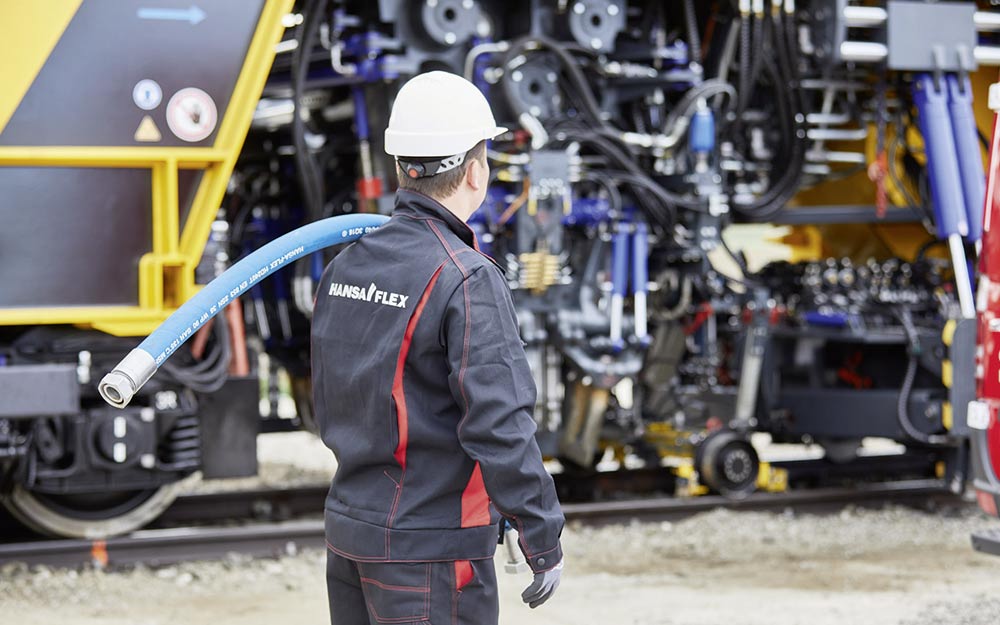
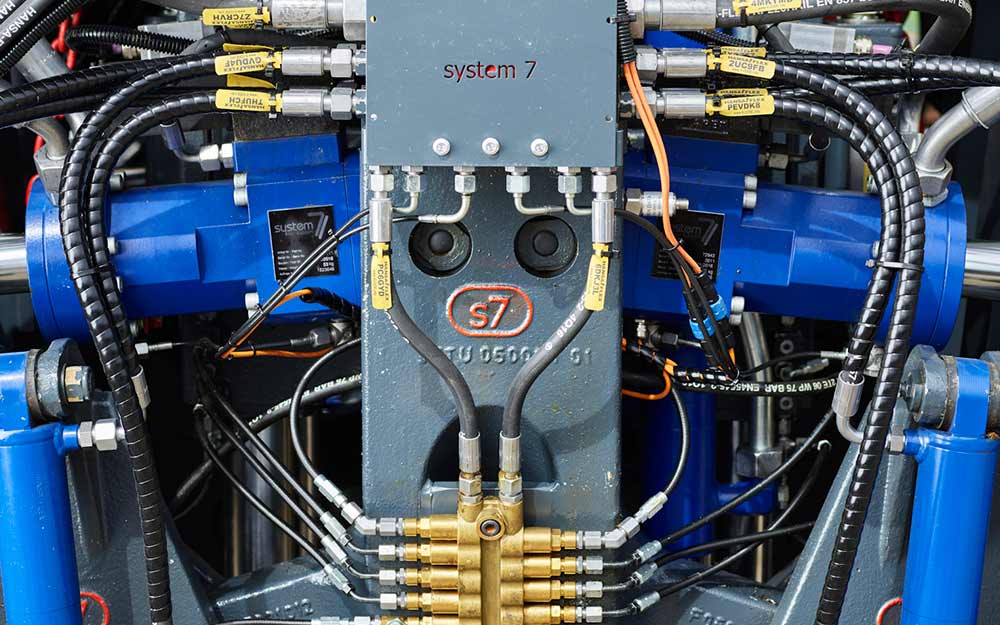
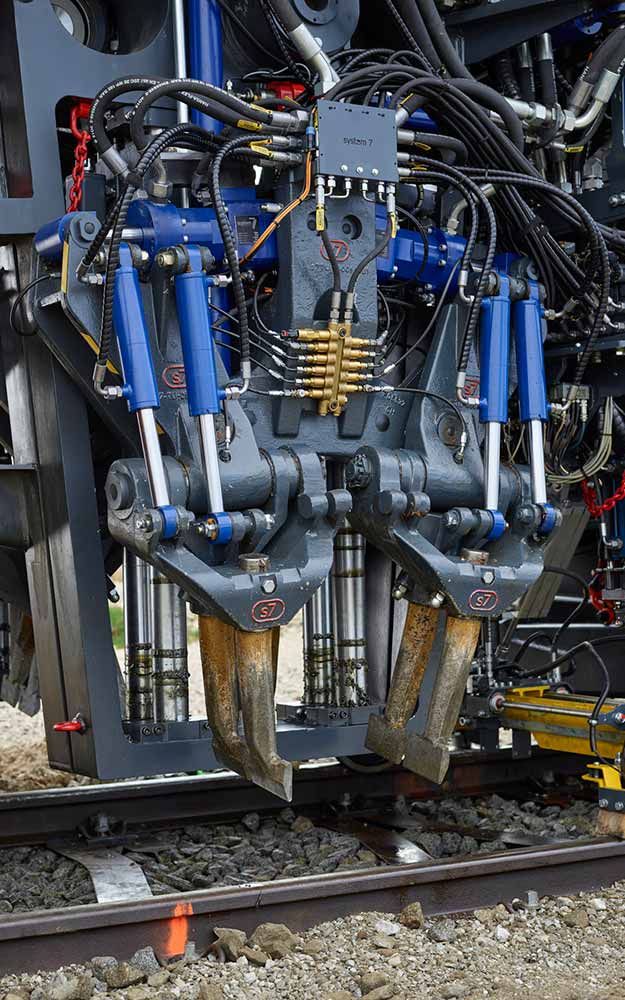
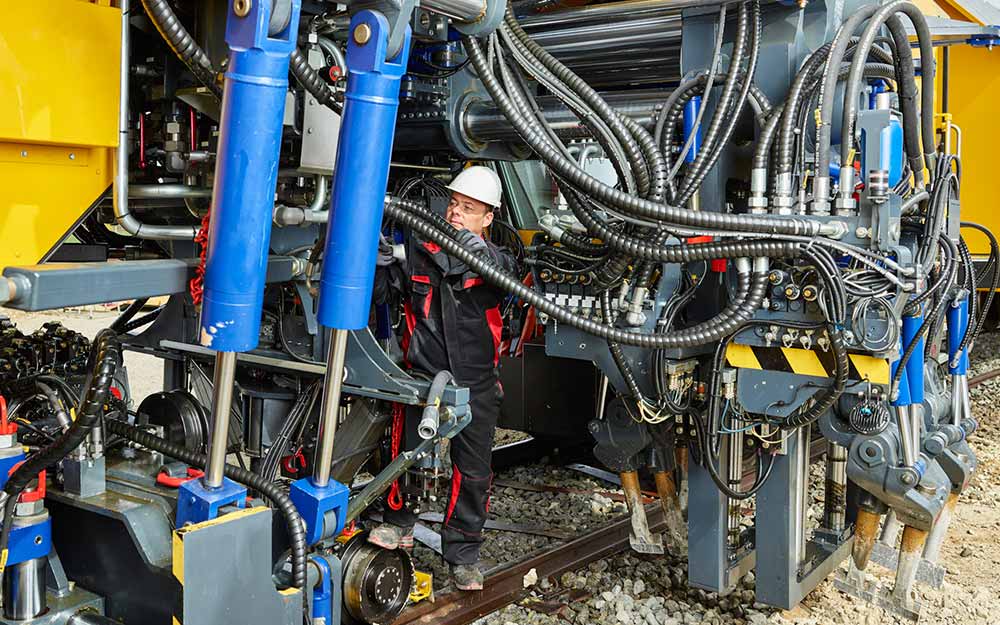
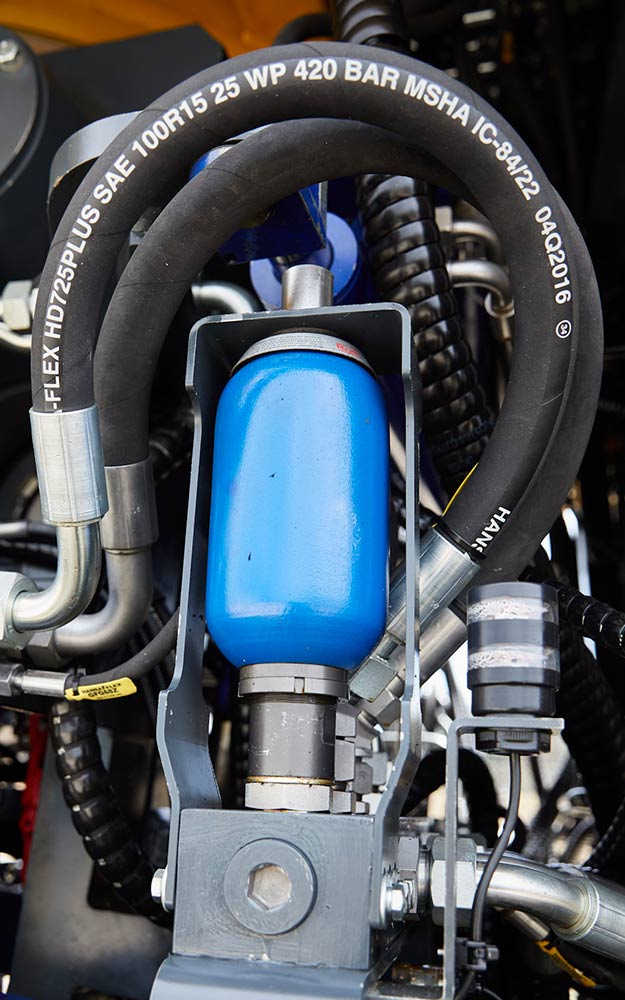
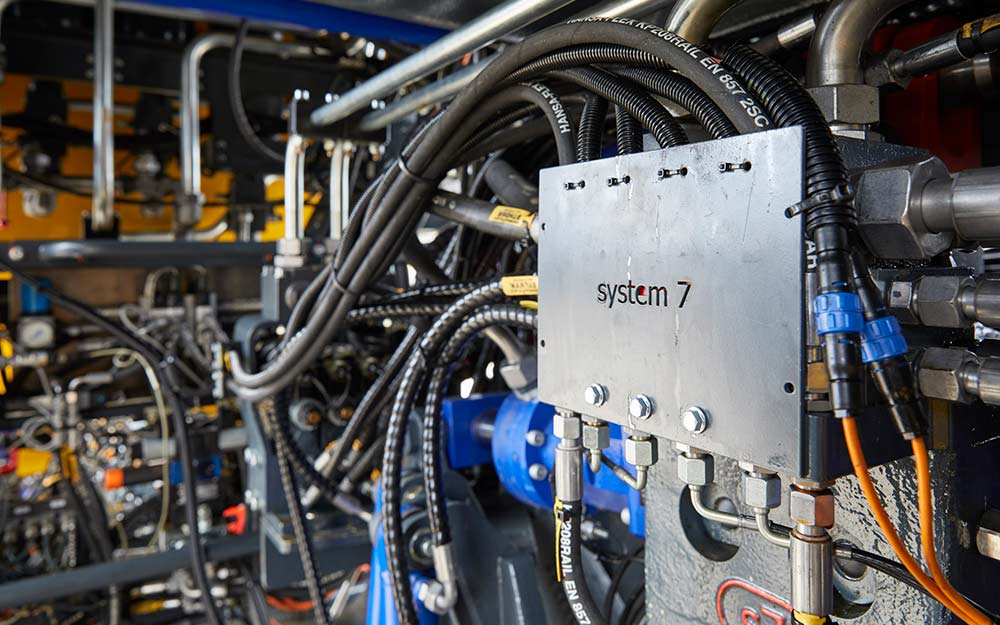
Do you have any questions about our services and products? Or do you need help?
Sundays and public holidays are excluded
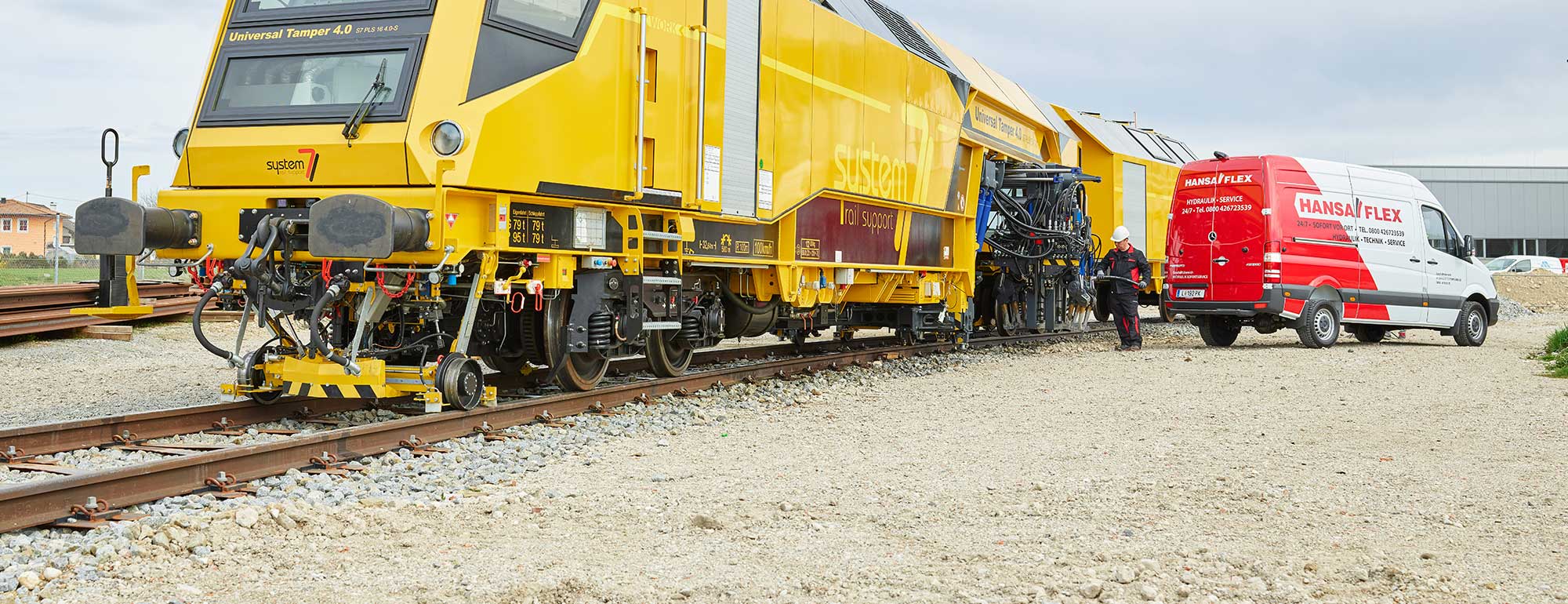
The track construction machine manufacturer system7 eliminates the disadvantages of conventional machines for track and track bed maintenance with a fully hydraulic drive. As a system partner, HANSA-FLEX not only supplied all the hydraulic hose lines.






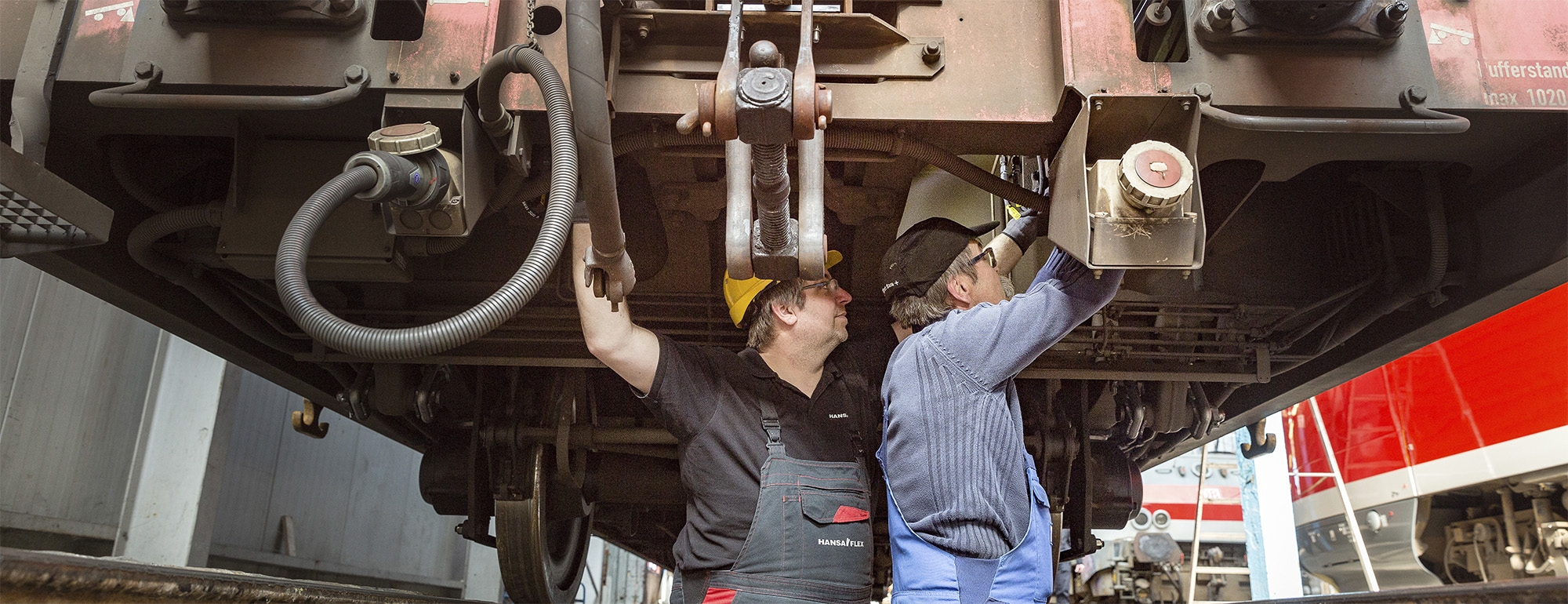
The RailMaint works in Delitzsch and HANSA-FLEX jointly maintain rail freight waggons for premium-class automobiles.

HANSA-FLEX is a partner of Stadler Deutschland GmbH in the integration of air-conditioning lines in the first air-conditioned S-Bahn trains for the Berlin/Brandenburg region.
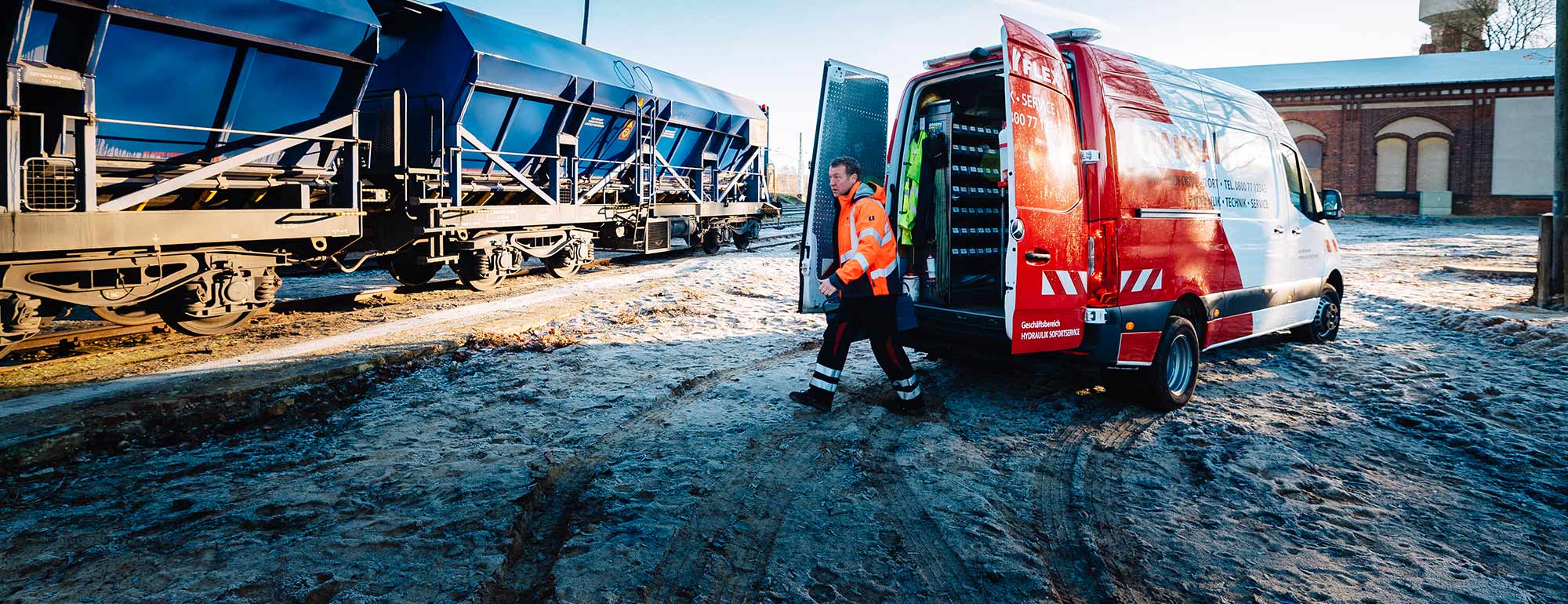
For the self-discharging freight train of Havelländische Eisenbahn AG (HVLE), the driving force is a complex hydraulic system serviced by HANSA-FLEX.